Article describes the symptoms and treatment of high and low blood sugar.
Contents of
- Blood Glucose Level
- Elevated Blood Sugar
- Signs and Symptoms of Excess Blood Sugar
- Reduced Blood Sugar
- Signs and Symptoms of Low Blood Sugar
- How to determine the exact level of glucose in the blood?
- How to prepare for blood sugar analysis?
- How to Normalize Blood Glucose Level
- Low Blood Sugar Treatment
- Video: Symptoms and Treatment of Low Blood Sugar
- Treatment of High Blood Sugar
- Video: Reducing Sugar in the Blood by Folk Remedies
Human blood glucose is an essential element, the is so as it makes its more active and hardy , boosts its power .However, it is necessary to monitor the level of glucose, as its fluctuations can lead to undesirable, and sometimes very serious, consequences.
Blood Glucose Norm
 Blood Glucose Norm
Blood Glucose Norm Glucose for the human body is considered a sugar dissolved in the blood, through which the correct carbohydrate metabolism is determined. In the blood, glucose comes from the liver and intestines. In order for human cells to metabolize glucose, insulin-hormone is needed. It is produced by the pancreas. If insulin is low in the blood, there is type 1 diabetes, if insulin is weak, then type 2 diabetes( 90% of cases).
The level of the glucose in the of the blood should be held in the within the of the standard. If the body is violated in a person's glucose upward( hyperglycemia) or lowering( hypoglycemia), then this leads to the development of serious complications. For example, with increased blood sugar( hyperglycemia), there is a diabetic neuropathy - nerve damage. There are pain in the legs, a burning sensation, "runnin 'creeps," numbness. In severe cases, trophic ulcers and gangrene of the extremity may occur.
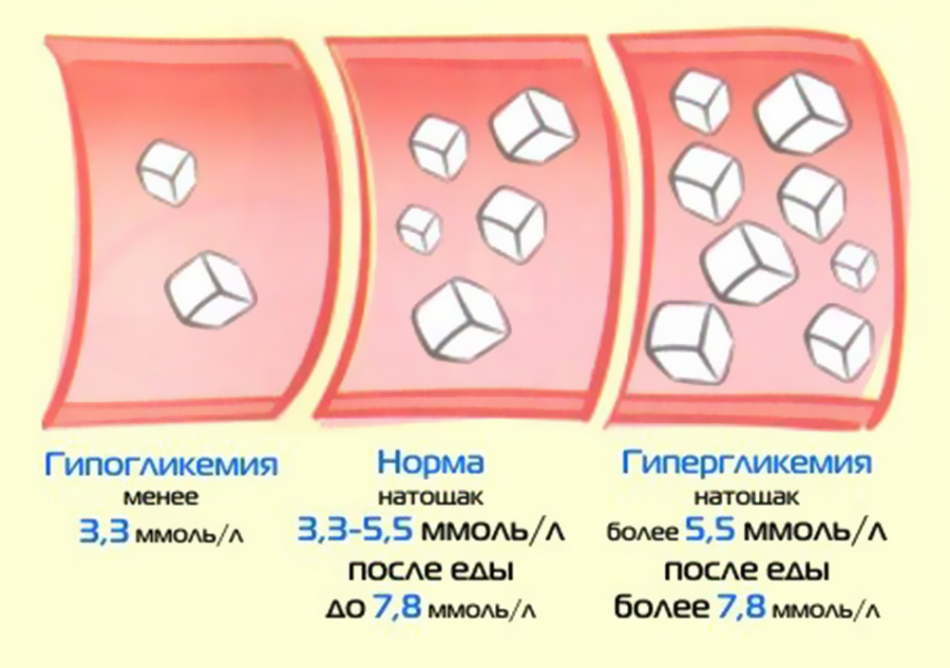 blood sugar values
blood sugar values The blood sugar content in men and women is the same and is 5.5 mmol / l. With age, the amount of sugar rises to 6.7 mmol / l. At children the norm of sugar in blood is 3,3 - 5,6 mmol / l.
Elevated blood sugar
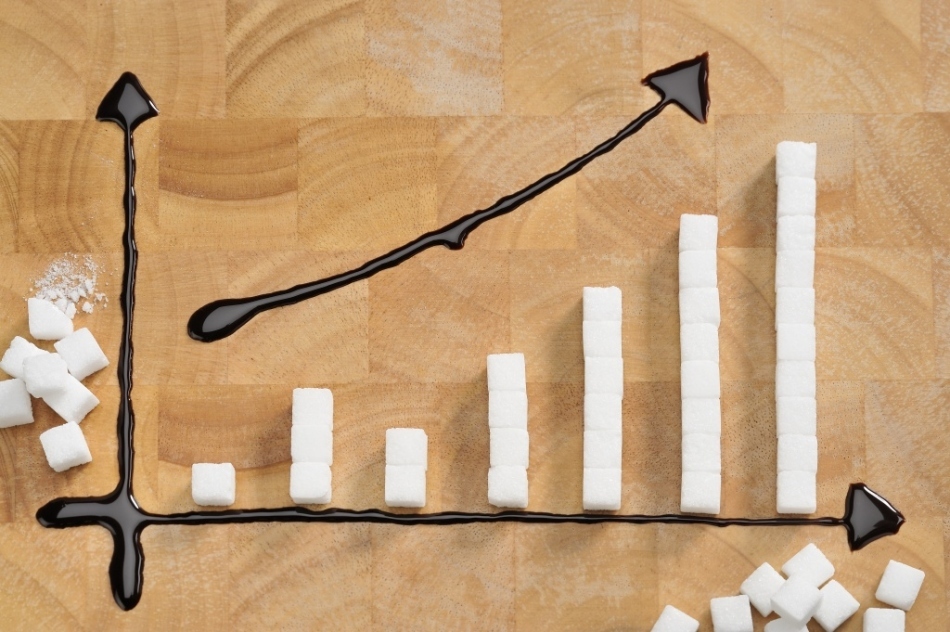 increased blood sugar
increased blood sugar A person's fasting blood sugar is determined by the minimum amount of sugar in the blood. After eating, food is absorbed and nutrients enter the bloodstream. Therefore, after eating, the amount of sugar in the blood rises. This increase in sugar is small and does not last long. This occurs under the condition that the functions of the pancreas are not violated, carbohydrate metabolism is correct and additional insulin is released, which lowers blood sugar.
If insulin is not enough( diabetes mellitus type 1) or if it is weak( type 2 diabetes mellitus), then blood sugar after a meal rises for a long time. It acts on the kidneys, on the nervous system, on the eyesight, there may be a heart attack or stroke.
Causes of increased blood sugar can be not only diabetes, but also:
- nerve stresses
- infectious diseases
- adrenal gland disorder, pituitary
- long-term use of medicines, etc.
Signs and symptoms of high blood sugar
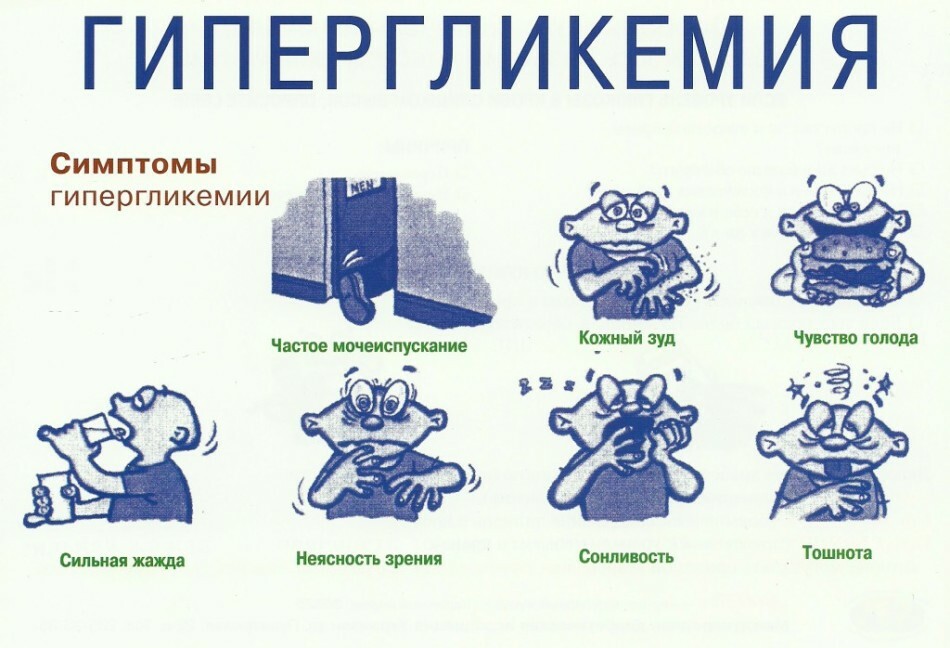 symptoms of hyperglycemia
symptoms of hyperglycemia The main symptom of increased sugarin the blood is thirst, with what is strong, which is accompanied by dryness in the mouth. With increased sugar, nerves are affected and this condition is called neuropathy. There are pains in the legs, weakness, burning sensation, "runniness creeping", numbness. In severe cases, trophic ulcers and gangrene of extremities may occur.
Reduced blood sugar
Most people have a rise in blood glucose. However, a common serious disease is the lowering of blood sugar - it is below 4 mmol / l. When diabetes is dangerous, a sharp drop in blood sugar, which can cause serious consequences. Reducing blood sugar is more common in obese people who are obese and eat poorly. For such people, it is necessary to establish the right way of life and proper nutrition.
Symptoms and symptoms of low blood sugar
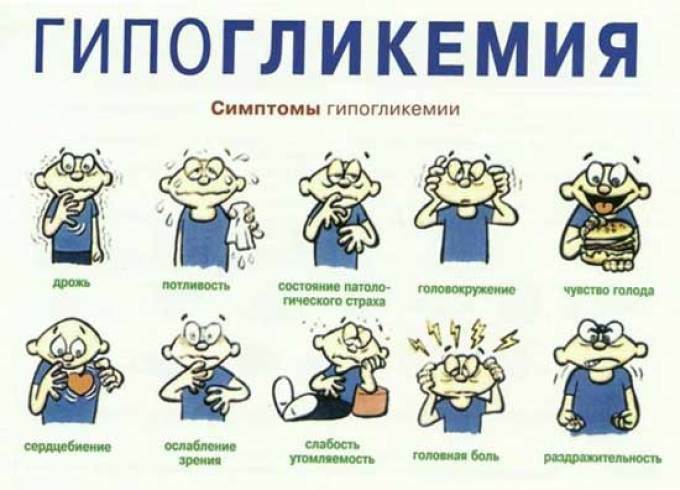 Symptoms of hypoglycemia
Symptoms of hypoglycemia The main symptoms of sugar reduction are:
- headache
- permanent fatigue
- anxiety
- hunger
- increased heart rate( tachycardia)
- blurred vision
- perspiration
With a sharp decrease in sugar in humans,there is no consciousness or there is such an inadequate behavior, which is characteristic for alcoholic or narcotic intoxication. If insulin is used, a decrease in sugar can occur at night( night hypoglycemia), which is accompanied by sleep disturbances and severe perspiration. If the sugar drops to 30 mg / dl, coma, convulsions and death may result.
How to determine the exact level of glucose in the blood?
You can donate blood for blood sugar in the morning in the morning on an empty stomach( capillary blood).
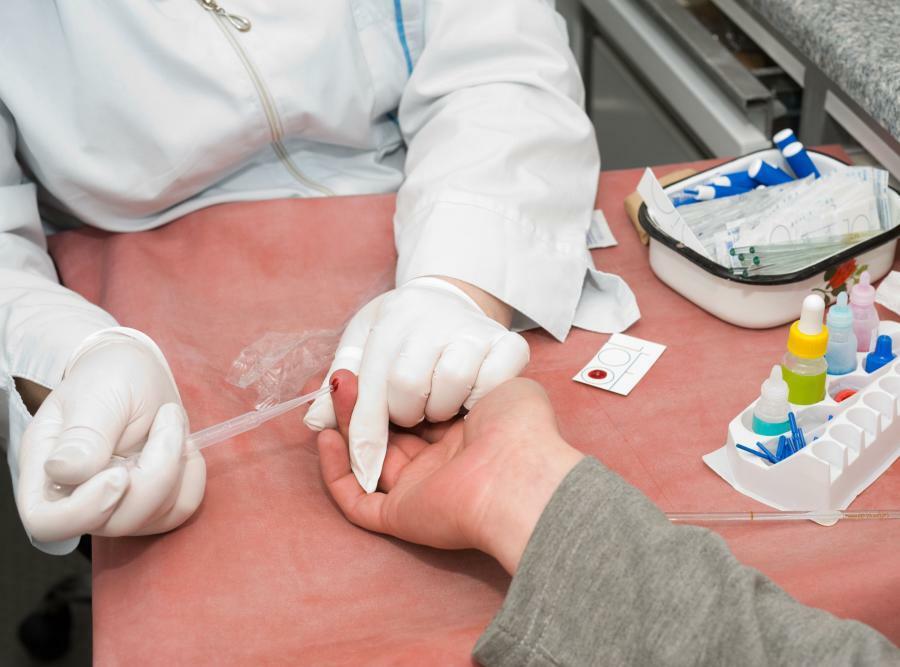 blood sampling for analysis of
blood sampling for analysis of For the reliability of the blood glucose test, an oral glucose tolerance test is performed. This method consists in that the patient is offered to drink glucose dissolved in water( 75 g) and after 2 hours they take blood for analysis.
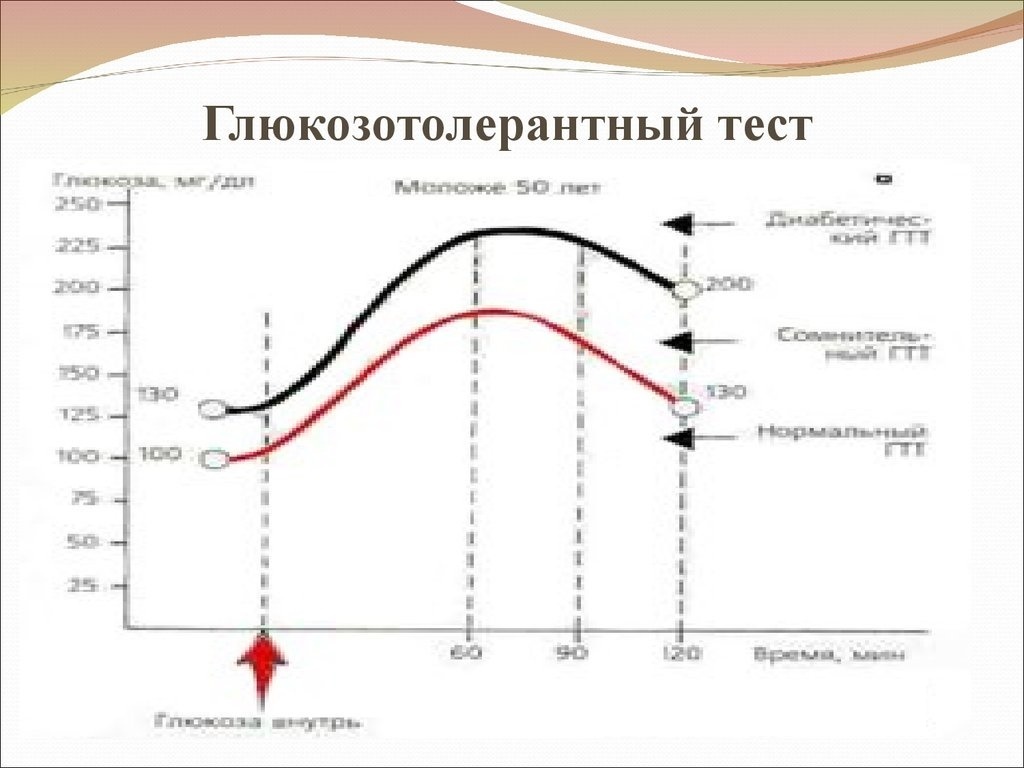 glycemic curves when performing GTT
glycemic curves when performing GTT It is advisable to carry out these two analyzes one after another in 5-10 minutes: first take blood from the finger on an empty stomach, and then drink glucose and again measure the sugar level.
Recently, an important analysis is glycated hemoglobin, which shows% of glucose in relation to erythrocytes - blood cells. With the help of this analysis, it is possible to determine the amount of sugar in the blood in the last 2-3 months.
 table of HbA1c results with mean blood sugar
table of HbA1c results with mean blood sugar At home, a glucometer is used. The sterile lancets and special test strips are attached to the glucometer: a lancet is needed to pierce the skin on the tip of the finger and transfer a drop of blood to the test strip. The test strip is placed in the device( glucometer) and determine the level of sugar in the blood.
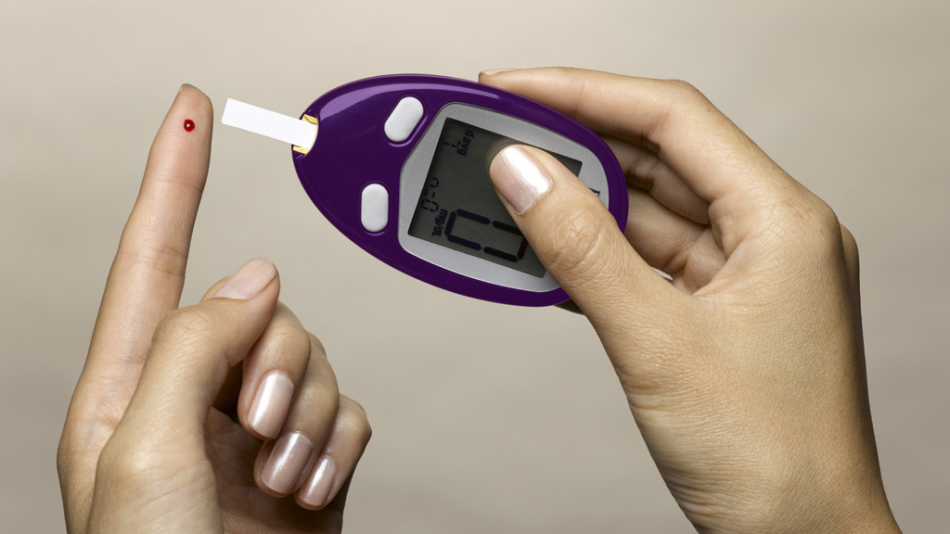 Glucose Meter
Glucose Meter How to prepare for blood sugar analysis?
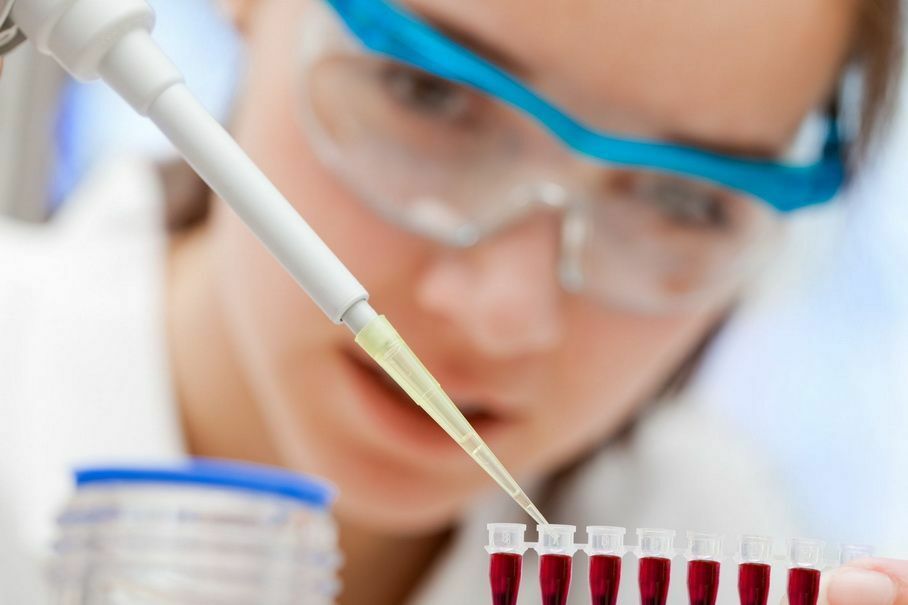 blood test
blood test For the analysis of blood sugar, the following rules should be remembered:
- First, if we donate blood for analysis in the morning, do not eat in the evening and in the morning before taking the test;secondly, you can drink any liquid
- If you take blood for glycated hemoglobin, it does not have to be given on an empty stomach
- If you use the blood glucose meter at home, you can take blood three hours after eating
How to normalize blood glucose level
 Choosing the right food
Choosing the right food First of all, it is necessary to establish the cause of the increase or decrease of sugar in the blood, for which it is necessary to consult a doctor who will approach each patient individually.
Some forms of diabetes do not require special treatment to normalize blood sugar, it is enough to establish a special diet: give up sweet( jam, candy, baking), potatoes, pasta, eat more unsweetened fresh vegetables and fruits, eat fish, seafood, nuts, soyand bean products, Jerusalem artichoke.
Food should include vegetable food: onions, garlic, beets, carrots, tomatoes, cucumbers, etc.
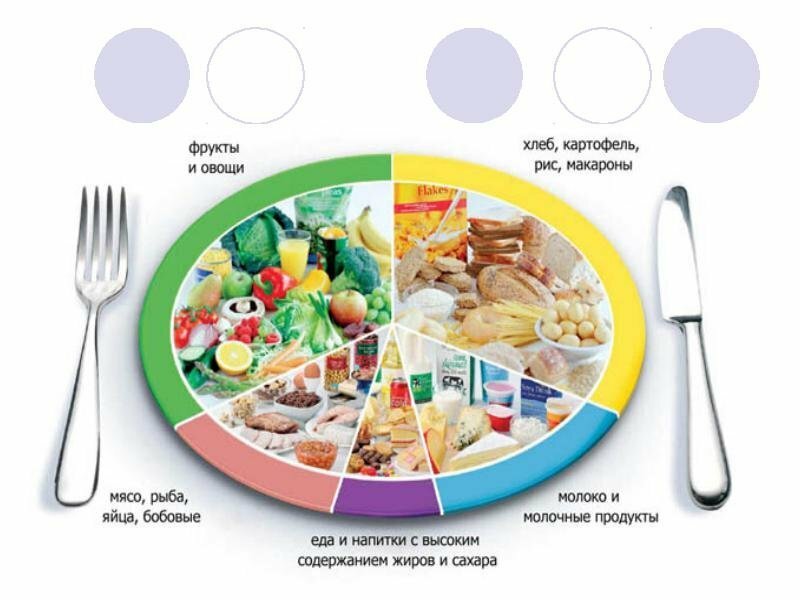 ration for normalization of blood sugar
ration for normalization of blood sugar It is possible to normalize blood sugar with medicinal herbs, for example, leaves or berries of bilberries, leafletsbean pods.
In addition to nutrition, you can use other methods of normalizing blood glucose levels, for example:
- outdoor walks
- contrast shower
- small exercise, exercises
- regular sleep - at least 8 hours a day
Used and drugs to normalize blood glucose, including insulin.
Treatment of low blood sugar
When low blood sugar in the blood requires a doctor's consultation about the therapeutic dose of insulin. When the blood sugar falls:
- the patient should use glucose tablets
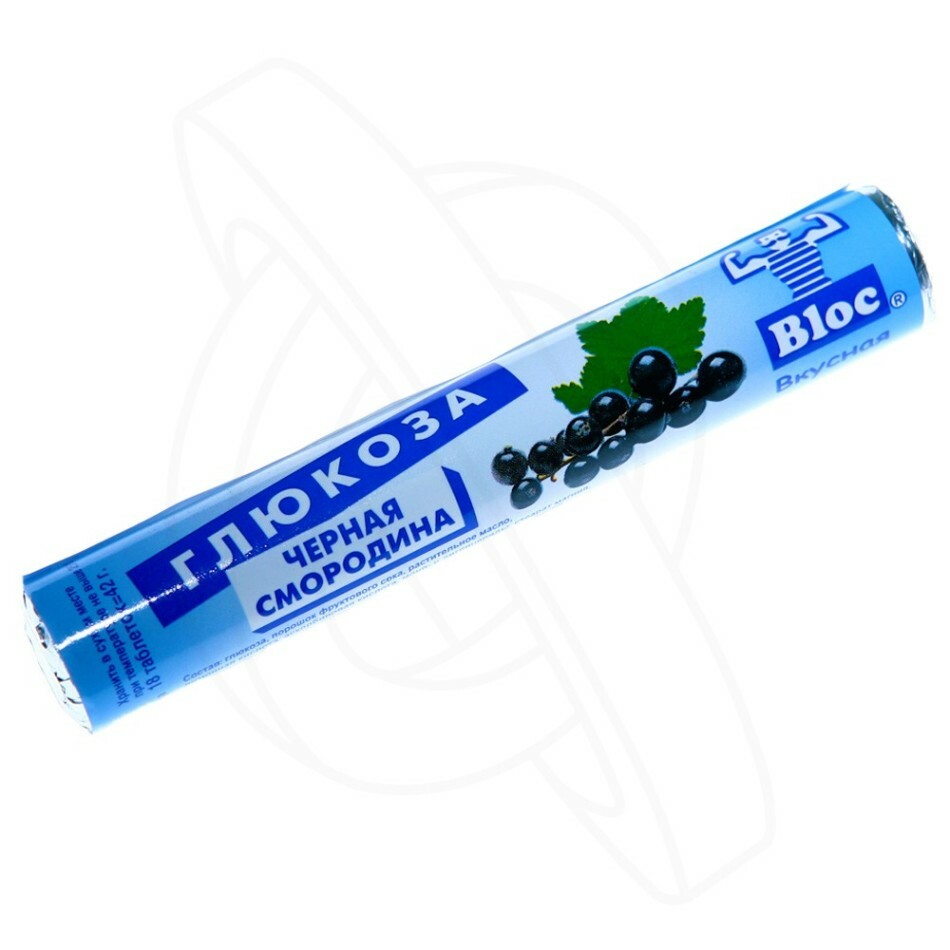 glucose
glucose - the correct diet should be established: it is necessary to eat foods with low glycemic content( seafood, vegetables, dairy products, whole grains, etc.)
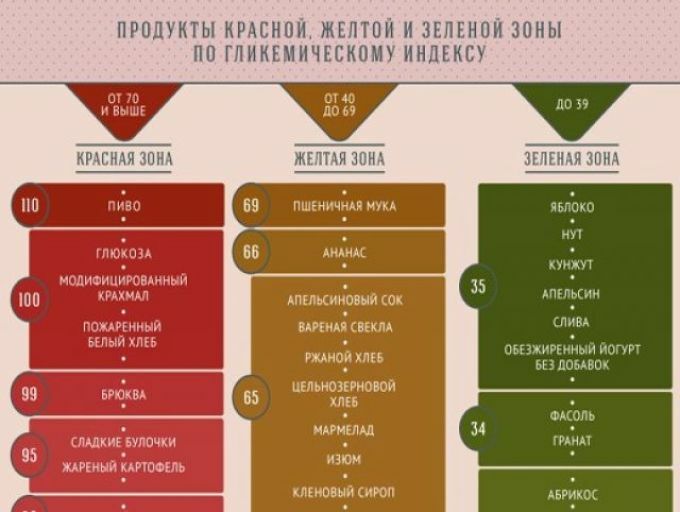 GI indicators in
GI indicators in - products need to be eatenat regular intervals 4-5 times a day, so as not to cause hypoglycemia.
Video: symptoms and treatment of low blood sugar
Treatment of high blood sugar
For a patient with high blood sugar it is necessary:
- to establish a low-carbohydrate diet: to consume within a day small portions of not more than 120 grams.carbohydrates, in severe cases of diabetes - 60-80 gr. Exclude from the food all foods containing sugar and eat 4-5 times a day
 low-carb products
low-carb products - with such a low-carb diet more often to check blood for sugar content
- if the patient has constipation with increased pressure and cramps in the leg muscles, it is necessary to take a multivitamin complex withvitamin C and magnesium
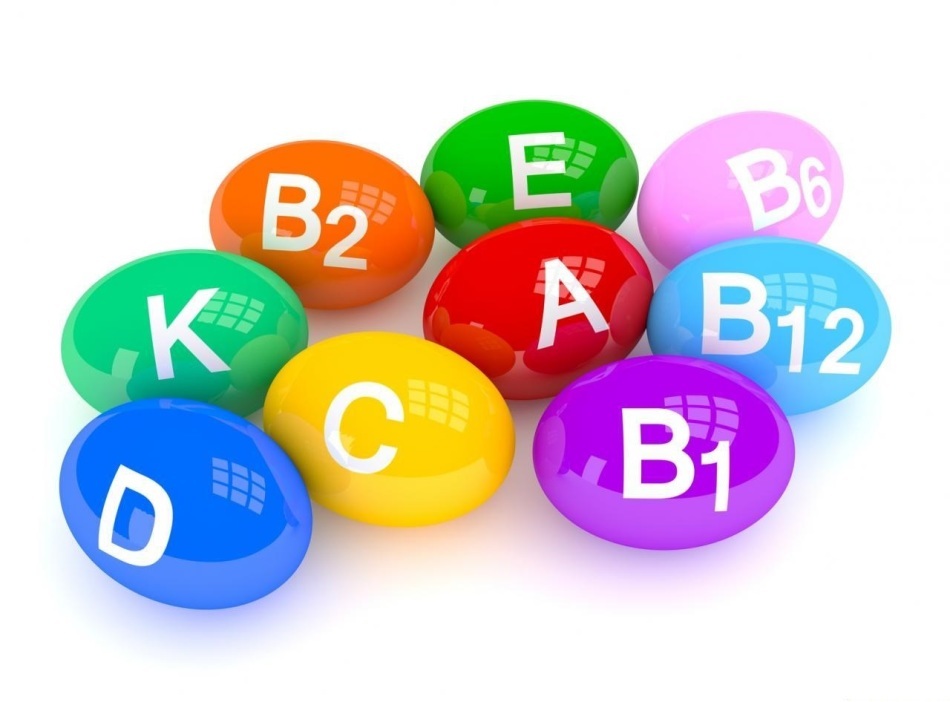 vitamin complex
vitamin complex - for the treatment of type 2 diabetes mellitus are used medicines that are prescribed by the doctor, and insulin
 medications
medications - to reducesugar is useful in any large quantities of non-carbohydrate liquid, for example tea from the leaves or blueberries
 blueberry tea
blueberry tea 